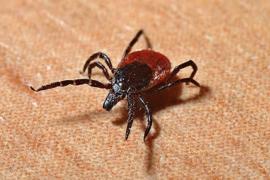In honor of Food Allergy Awareness Week (May 14–20, 2017), Margaret Redmond, MD, discusses how to be lower the chances of food allergy reactions at camp and what to do in case of allergen ingestion.
Food allergy is a common topic for questions that I receive from parents and caregivers in the allergy clinic as the prevalence of food allergies has increased in the last twenty years.1 In this blog, I hope to de-mystify how to manage food allergy at camp.
Let’s start with definitions. IgE-mediated food allergy is an immunologic reaction to a food protein that occurs with every exposure to that food. Reactions can be mild and limited to mouth itching or a few hives, or severe with respiratory symptoms, low blood pressure, vomiting, or full body hives. Severe reactions are called anaphylaxis and can be life-threatening.
Non-allergic symptoms can also occur from eating foods, such as lactose intolerance, where a person lacks the enzyme needed to digest a sugar in cow’s milk, or auto-immune diseases like celiac disease. These conditions can cause uncomfortable symptoms, but are not immediately life-threatening.
Food allergy reactions occur without warning and can be scary for all involved. It is important to be prepared at all times, even for kids without known allergies. Data from schools showed that 25 percent of cases of anaphylaxis occurred in a child without a history of food allergy.2
The first step is clear communication between the camp and family. I give my patients a food allergy action plan that lists their name, allergenic foods, and what treatment to use for which exact symptoms. I encourage you to ask families of food allergic children to provide a copy of their food allergy action plan to the camp, as this is the best way to provide clear communication regarding their allergies.
The second step is making sure appropriate treatment is available for your campers. The first line of treatment for anaphylaxis is intramuscular epinephrine; this is available in three different auto-injector devices. It is important that all staff be trained on how to recognize the symptoms of anaphylaxis and use the epinephrine auto-injectors. Every camper who reports a history of food allergy should have their epinephrine auto-injector available at all times. If the camper is too young to carry it on their person, it should be passed between responsible adults. After epinephrine is given, 911 should be called and the camper taken to the emergency room for observation.
The third step is reducing the risk of accidental ingestion. It is more important to have standard policies in place to reduce accidental ingestion than banning specific foods, as it is impractical to restrict all foods that campers may be allergic towards. One approach is to have an allergen free area of the dining hall where food allergic children can eat with other kids who either have food allergies or are not eating meals containing their allergen. Hands and tables should be washed with soap and water before and after every meal. It is important to know that hand sanitizers do not remove food protein from hands. If meals are prepared on site, it should be clearly marked which allergens are present in the foods. Utensils, pans, pots, and plates should not be shared between foods without being washed with warm, soapy water.
This overview provides a brief introduction about how to prepare for food allergies at your camp. I encourage you to use the CDC Voluntary Guidelines for Managing Food Allergies for more in-depth information. 3
References
1Branum AM, Lukacs SL. Food allergy among U.S. children: trends in prevalence and hospitalizations. NCHS Data Brief. 2008;10:1-8.
2Sicherer SH, Furlong TJ, DeSimone J, Sampson HA. The US Peanut and Tree Nut Allergy Registry: characteristics of reactions in schools and day care. J Pediatr. 2001;138(4):560-565
3Centers for Disease Control and Prevention. Voluntary Guidelines for Managing Food Allergies in Schools and Early Care and Education Programs. Washington, DC: US Department of Health and Human Services; 2013. Available at: www.cdc.gov/HealthyYouth/foodallergies/pdf/13_243135_A_Food_Allergy_Web_508.pdf.
Margaret Redmond, MD, is a pediatric allergist at Nationwide Children’s Hospital in Columbus, Ohio. Dr. Redmond has an interest in academic interest in anaphylaxis and food allergy in the camp setting.
The views and opinions expressed by contributors are their own and do not necessarily reflect the views of the American Camp Association or ACA employees.



